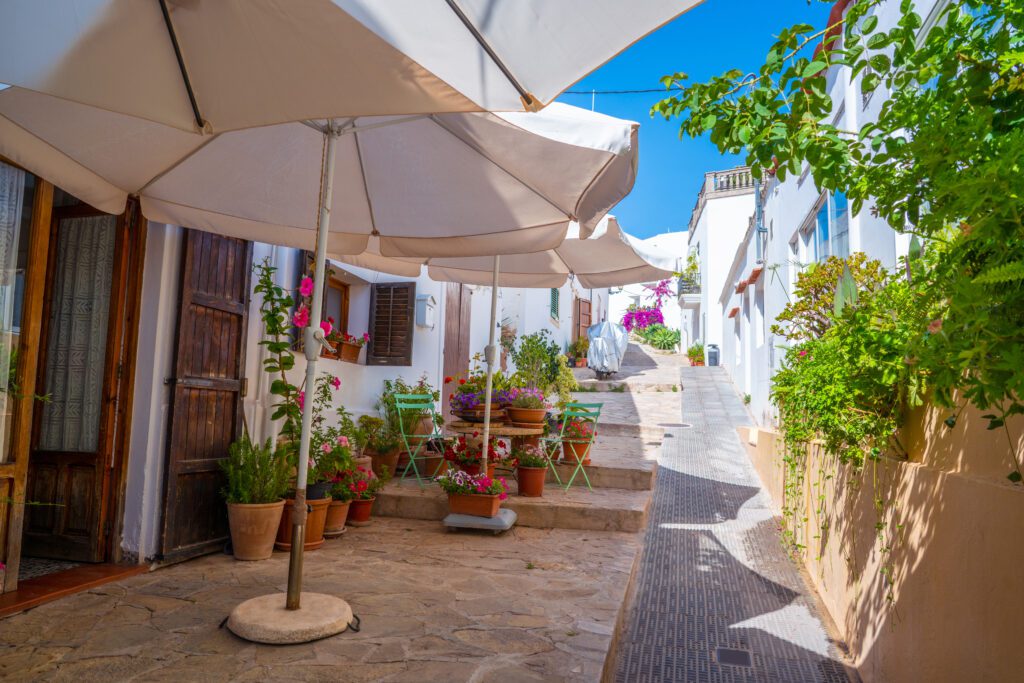-
-
Change Your Currency
EUR- EUR
- USD
- NOK
- FIM
- DEM
- DKK
- SEK
- ESP
White washed houses
Malaga offers more than the sun, beaches, and delicious cuisine. One of the best places to visit is Los Pueblos Blancos, which will not leave even the most seasoned traveler indifferent.

Aside from having spectacular views, most of these towns are in a beautiful geographical enclave where you can observe the mountain culture, traditions, and the famous Andalusian popular architecture.
Ruta de los Pueblos Blancos is a desirable alternative for those looking for alternative activities or for those interested in knowing more about the culture of Andalusia. The white towns have special characteristics where you can appreciate a lot of history and traces of other ancient cultures such as the Phoenicians, Celts, or Visigoths.
White washed houses are a tradition they have passed down through generations; whitewash is a mixture of lime, sand, and water that serves as an exterior coating on their buildings, protecting them from intense heat and epidemics. Every year, the “whitewash” tradition has been maintained over time and distance, giving a magic appearance to the town, and making it a popular tourist attraction.
White houses, red roofs, and steep streets adorn the landscape which becomes canvases. Several corners and passageways look as if they were plucked from a storybook, evoking a sense of timelessness for visitors.
PS. Collage of White towns

Antequera
It is in the heart of Andalusia and has an impressive historical-cultural heritage in addition to its beautiful white houses. A love affair blossoms between Antequera and its people, architecture, and history. As well as walking through its streets, visitors can explore other natural and historical sites like Torcal Natural Park and Dolmens.
The walkthrough Antequera becomes an adventure where you can find historical squares and one of the most beautiful urban complexes in the city, the Plaza de San Sebastián. From the Almenillas viewpoint, located above the wall, a visitor will be able to see the entire city, including numerous churches, towers, bell towers, and palaces, from the best views. The viewpoint also provides a view of the famous Peña de los Enamorados, which is common knowledge as “El Indio” (Native American) since it resembles the profile of this person.
There is also an obligatory visit to the Alcazaba, a Muslim fortress that was almost impregnable due to its double walls and location on the Antequera hill, a part of the walled complex of the Islamic medina.
Finally, the Antequera Dolmens was declared a World Heritage Site by UNESCO in 2016 for the extraordinary state of conservation of the six-thousand-year-old megalithic constructions, as well as a significant prehistoric site.
Los Dólmenes de Antequera are three cultural monuments (Menga dolmen, Viera dolmen and Tholos de El Romeral) and two natural monuments (La Peña de los Enamorados and El Torcal).
The Megalithic Necropolis of Antequera was built more than 6,500 years ago and is considered one of the most important in Europe due to its unique orientation in the world. Most of the megalithic monuments were aligned to mark the sunrise and sunset, it is mean the winter and summer solstices, while the Dolmen of Menga is oriented towards La Peña de Los Enamorados and El Tholos de El Romeral towards the karstic landscape of El Torcal, and the Viera Dolmen is the only one facing the sun. Although these are fewer of the recommended places to visit, Antequera deserves to be explored over several days since there are many places of interest to visit and enjoy, such as the Collegiate Church of Santa María Mayor, Palacio de Nájera, or the Plaza de Toros, among other beautiful places. For this reason, we recommend spending at least one weekend in this wonderful town in the province of Malaga.
Ronda
Located in an impressive gorge called El Tajo, Ronda boasts views worthy of a Hollywood film. The deep gorge cuts the city in half, offering breathtaking views. The gorge separates the old quarter of Ronda from the new part of the city, which is connected by two bridges. The bridge Puente Nuevo was built in 1751 and has become a spectacular viewpoint and a popular place to take pictures as a souvenir. A zip line from Puente Nuevo is also available for the more adventurous, and while experiencing the adrenaline they can also admire the stunning scenery.
In case you have only one day to explore Ronda, it is advisable to book a guided tour at the Municipal Tourist Office, where a professional guide will show you the most emblematic sights in the city. It is a walk of almost two hours in which a guide will show you the most characteristic sights of the city from the Phoenicians, Greeks, through the Muslim conquest to Joseph Bonaparte’s arrival.
From the Alameda del Tajo viewpoint, the visitor can experience the full beauty of Sierra Bermeja (the mountain range of the Serranía de Ronda), a natural area with many protected species of Flora and Fauna.
There are various hotels with impressive views in the new section of the city, as well as bars and restaurants with tapas and traditional Spanish dishes. With around 1 kilometer of pedestrian and shopping areas, Ronda has one of the longest shopping areas in Spain.
The Arab baths of Ronda, also known as the Baths of San Miguel, are among the best preserved in the Iberian Peninsula and are evidence of the Muslim influence in the region. A bath, such as the one in Ronda, which is located at the foot of the now-defunct Puerta del Puente, served as a place of socialization and an obligatory step before entering a city in ancient times.
Regardless of whether tourists come as a family, a couple, or even a solo traveler, Ronda has an assortment of good things to visit and enjoy.
Click the link to read our editorial about Spanish souvenirs

